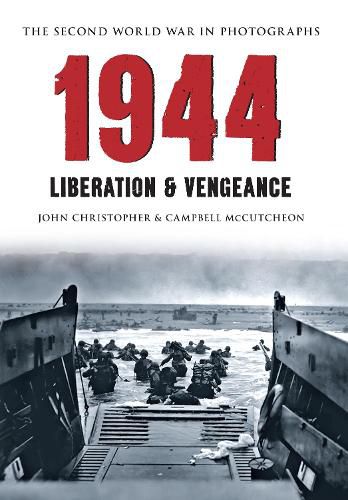Readings Newsletter
Become a Readings Member to make your shopping experience even easier.
Sign in or sign up for free!
You’re not far away from qualifying for FREE standard shipping within Australia
You’ve qualified for FREE standard shipping within Australia
The cart is loading…






In 1944, the end of the war was in sight, with resistance blooming and major cities being liberated. In January, the Allies successfully landed at Anzio. The landings were successful, and although there was five-month stalemate, the battle set the wheels in motion for the liberation of Rome in June. Meanwhile, in Russia, after over two years of siege, Leningrad was liberated, and the Russian army took back the city. In the middle of the year came arguably the best-remembered operation of the war: the D-Day landings. Over 4,000 Allied soldiers were killed, but the landings sparked the beginning of the successful Battle of Normandy. This prompted the first V-1 flying bomb attacks on London, and they continued until October. Nevertheless, the Allies continued to push forward, and Paris was finally liberated in August 1944, after four years of Nazi control in the French capital. The Allied victories gave hope, and led to events such as the Warsaw Uprising, which lasted for two months from August, and was organised by the Polish Home Army resistance. Unfortunately, the Poles were defeated, but this was the largest resistance effort of the Second World War, and signalled the beginning of the end for the Nazis. Even in the Pacific, the tide was beginning to turn, with the Allies reoccupying Burma from the end of the year. Indeed, Allied hopes of victory were so high that it was decided to stand down the Home Guard in December. This is the sixth in a series of books covering the major events of the Second World War year by year.
$9.00 standard shipping within Australia
FREE standard shipping within Australia for orders over $100.00
Express & International shipping calculated at checkout
In 1944, the end of the war was in sight, with resistance blooming and major cities being liberated. In January, the Allies successfully landed at Anzio. The landings were successful, and although there was five-month stalemate, the battle set the wheels in motion for the liberation of Rome in June. Meanwhile, in Russia, after over two years of siege, Leningrad was liberated, and the Russian army took back the city. In the middle of the year came arguably the best-remembered operation of the war: the D-Day landings. Over 4,000 Allied soldiers were killed, but the landings sparked the beginning of the successful Battle of Normandy. This prompted the first V-1 flying bomb attacks on London, and they continued until October. Nevertheless, the Allies continued to push forward, and Paris was finally liberated in August 1944, after four years of Nazi control in the French capital. The Allied victories gave hope, and led to events such as the Warsaw Uprising, which lasted for two months from August, and was organised by the Polish Home Army resistance. Unfortunately, the Poles were defeated, but this was the largest resistance effort of the Second World War, and signalled the beginning of the end for the Nazis. Even in the Pacific, the tide was beginning to turn, with the Allies reoccupying Burma from the end of the year. Indeed, Allied hopes of victory were so high that it was decided to stand down the Home Guard in December. This is the sixth in a series of books covering the major events of the Second World War year by year.